index[Calixto][Description] [Axolotl FAQ]  [My Axolotls] [Habitat] [Feeding] [Health] [References] [Links] [Genetics] contactaxolotls@yahoo.com-or- Sign The Guestbook version19.12.02visitstravelDa Homepagelegal© 1996,1997Chris Eng All Rights Reserved 
|
Axolotl?"Play in the water." The Encyclopedia Americana says an axolotl," is a larval salamander regarded as edible... are six to [ten] inches long, and are prepared by either roasting or boiling and eaten with vinegar or cayenne pepper."They are salamandersAxolotls are urodeles that belong to the group of mole salamanders.Linnean NameThe common laboratory axolotl, as well as the pet axolotl are exclusively Ambystoma mexicanum. However, The axolotl is not only represented by A. mexicanum. In Mexico City, the locals use the term "axolotl" for any of the larger neotenic salamanders listed below.Classification for the Axolotl
These mexican salamanders routinely display neoteny:
Scientific MisinformationThere are some books and care manuals for salamanders that incorrectly, for our purposes, refer to the larval form of the non-neotenic tiger salamander A. tigrinum as an axolotl.Medical ApplicationsUntil recently, axolotls were sold widespread on the market for food. Also, syrups and other concoctions have been sold as cures for coughs and respiratory ailments.Exception, Rather Than The RuleThey are neotenic and generally do not exhibit a dual-life stage as, for example, other salamanders. Axolotls remaining in their larval stage for life and become sexually mature and breed in larval form by external fertilization.Special ProtectionMexico has listed these Ajolotes as species with special status protection:
Closest RelativeAxolotls most resemble, their closest relative, the larval form of the tiger salamander. The difference is that the axolotl rarely morphs into a terrestrial salamander. Here is a picture of an adult terrestrial tiger salamander. For comparison here is a picture of a terrestrial axolotl for comparison. See Axolotl Habitat for more about this contrary phenomena.Endangered Species StatusThe axolotl is being threatened towards extinction in its native habitat by pollution, exploitation and introduction of predators (sports fish). Wild axolotls are becoming so scarce that permits are required for the possession and taking of a wild specimen.Historical SignificanceAxolotl is derived from Nahuatl, the language of the Aztecs. Xolotl is an ancient deity and I somehow lost the rest of this during editing.XolotlOh... I found it. Xolotl is the twin brother of the Aztec god Quetzalcoatl. He has also been known as the God of Games.God of GamesIn Aztec drawings, Xolotl is shown as a dog with mangled hands and feet. They believed that dogs guided the dead to heaven. Axolotls are living disciples of Xolotl, so try not to upset him and take very good care of your axolotl.LinguisticsIn Nahuatl they are called atlxolotl, which means "Water-Doll." Many people think it translates to "Water-Dog," but dog in the Aztec language is itzcuintli not xolotl,Current Status of Native HabitatIn the lakes of the Valley of Mexico, draining and filling of lakes, agricultural development, introduction of predator fishes in the lakes for sports fishing, as well as severe pollution has taken the axolotl to the brink of extinction.Scientific Data LackingWorse yet, virtually nothing is known about its ecology, natural history and its relationship with other ambystomids. Smith |
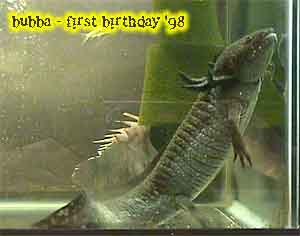  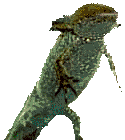 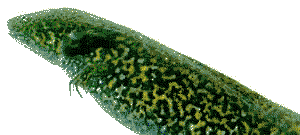 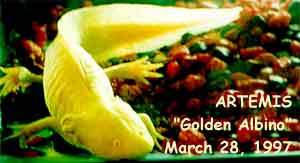 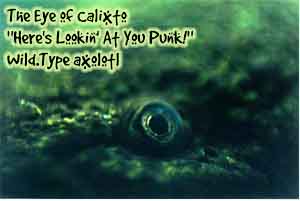  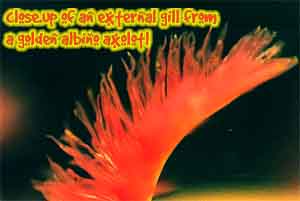 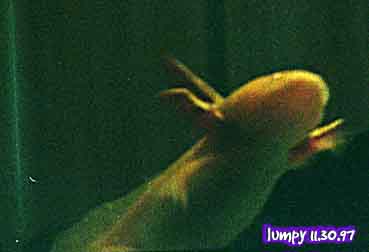 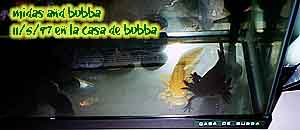 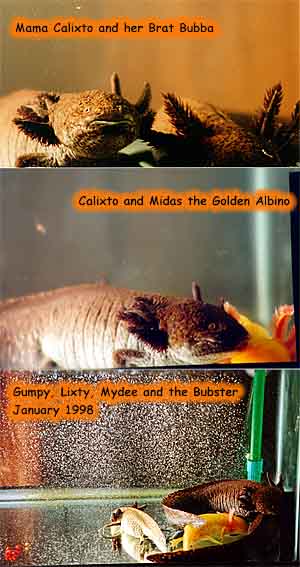 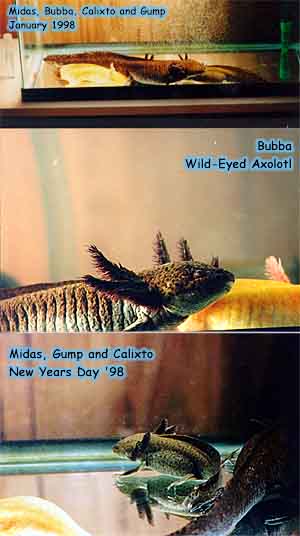 |